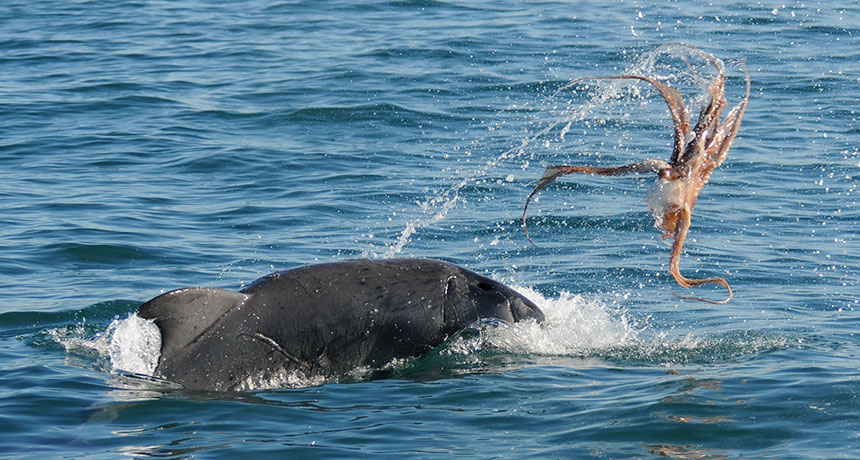How a dolphin eats an octopus without dying

Most people who eat octopus prefer it immobile, cut into pieces and nicely grilled or otherwise cooked. For some, though, the wiggly, sucker-covered arms of a live octopus are a treat — even though those arms can stick to the throat and suffocate the diner if they haven’t been chopped into small enough pieces.
Dolphins risk the same fate when eating octopus — and they can’t cook it or cut it up with a chef’s knife. “Octopus is a dangerous meal,” notes Kate Sprogis of Murdoch University in Australia. Even if a dolphin manages to remove an octopus’ head, it still has to deal with those sucker-covered tentacles. “The suckered arms would be difficult to handle considering dolphins don’t have hands to assist them,” Sprogis says.
A group of hungry dolphins off the coast of Western Australia have figured out a solution. They shake and toss their prey until the head falls off, the animal is in pieces and its arms are tender and not wiggling anymore, Sprogis and her colleagues report April 2 in Marine Mammal Science.
The behavior, never before reported, was discovered during observations between March 2007 and August 2013 of bottlenose dolphins living in the waters off Bunbury, Western Australia. During that time, researchers witnessed 33 events in which dolphins handled an octopus with two different methods.
In one technique, a dolphin held an octopus in its mouth and shook it, slamming its prey into the water’s surface until the meal was in pieces.
Each dolphin would repeat its preferred motion, or combine the two, usually around a dozen times, over several minutes until the octopus was safe to eat. (See video below.)
“If the dolphins haven’t prepared their meal enough, then this can cause problems,” Sprogis notes. There have been two dead dolphins found in this area with whole octopuses lodged in their throats. The researchers assume that the dolphins suffocated.
Dolphins have garnered a reputation for tackling difficult-to-eat foods in creative ways. Some have been spotted using cone-shaped sponges to flush out little fish from the sandy ocean floor. Others use a six-step process to prepare a cuttlefish meal.
The Bunbury dolphins eat both octopus and cuttlefish, and those meals appear to be more common in the winter and spring, when waters are cooler, Sprogis notes. That may be when the octopus and cuttlefish breed and lose some of their camouflage abilities — making them easy prey for dolphins brave or knowledgeable enough to take advantage of the potential meal.